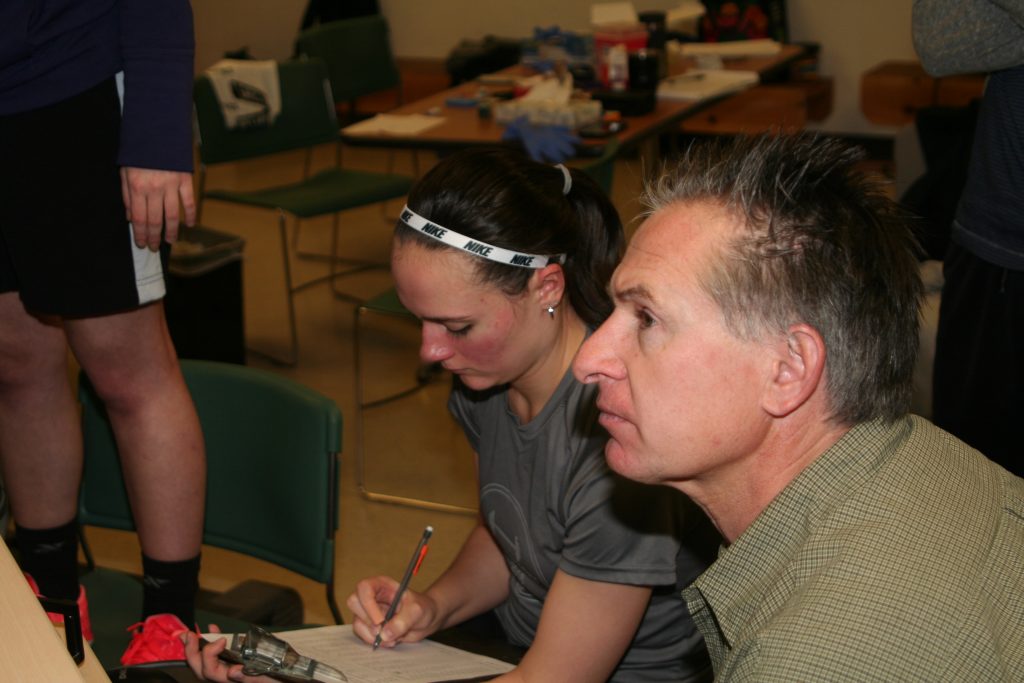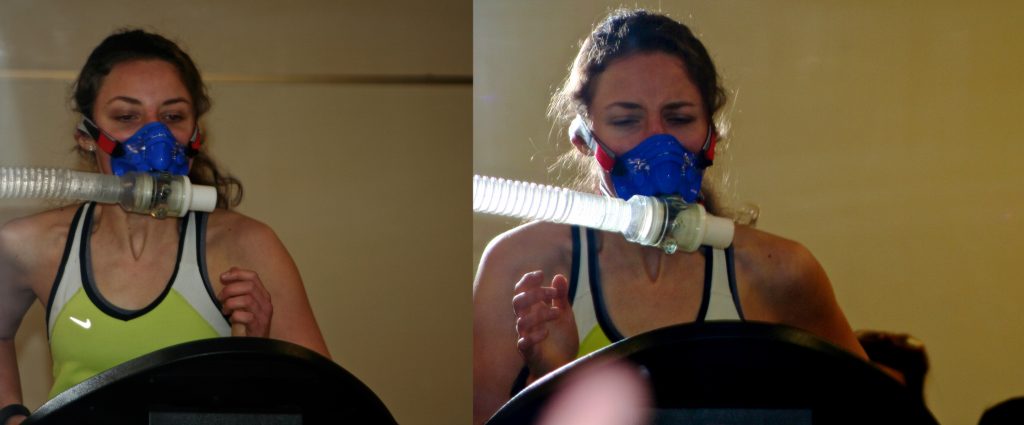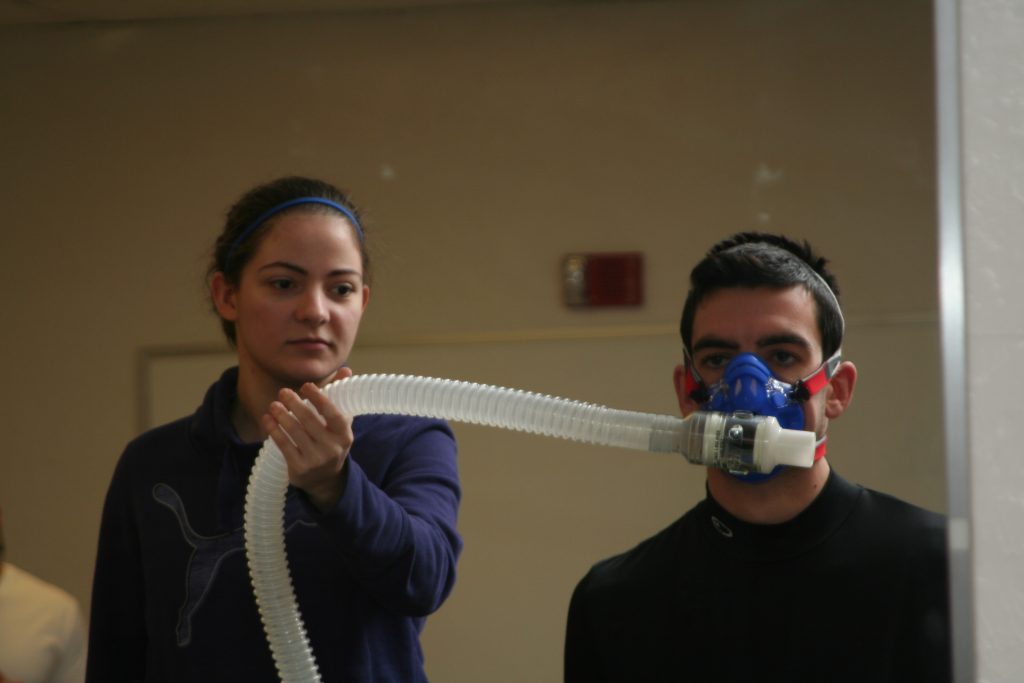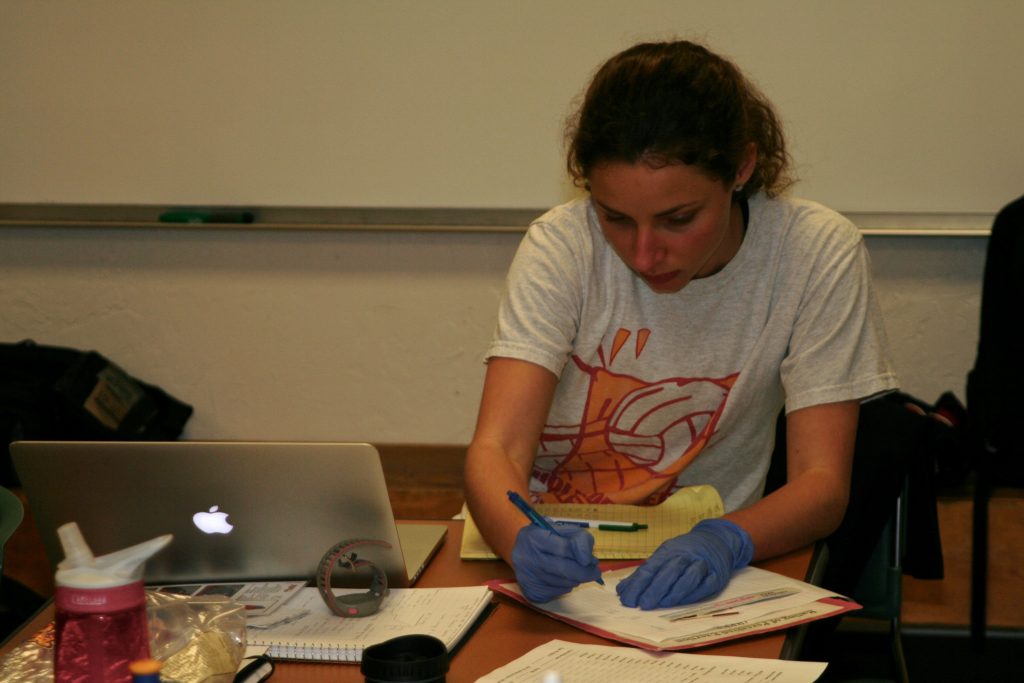Today, we went to the physiology lab at the University of Arizona to perform our baseline VO2 max tests.
We began with a lecture by Doug Keen, a physiology professor at the university. He outlined the three main pathways of ATP production in the body, and then taught us about VO2 max testing, which measures the efficiency of the aerobic oxygen system in particular. VO2 max is the maximum volume of oxygen that can be consumed by the body during intense exercise. It varies with age, sex, conditioning and altitude.

The VO2 max test involves three stages: measurement of resting VO2 during one minute with the subject seated, measurement during walking at 3.0 mph, and measurement during increasingly strenuous exercise, up until the VO2 level plateaus, i.e. reaches its max. In our case, we increased the grade of the treadmill on which we were running by two percent every two minutes until exhaustion.
There were four additional factors that were indicators of whether an individual has reached his or her max VO2 level other than the measurement of VO2 itself. They are the rating of perceived exertion (RPE), respiratory exchange ratio (RER), heart rate (HR), and blood lactate. The RPE is a scale from 1-20 that is called out by the individual based on how hard they think they’re working. A value of 20 indicates that they have reached their VO2 max and cannot continue any longer. The RER is measured by dividing the CO2 production by O2 consumption, and is an indication of which substrate an individual is using to fuel exercise, as well as whether hyperventilation is occurring. The maximum RER value is 1.15. A person’s maximum heart rate (beats per minute) can be estimated by subtracting their age from 220. Finally, a blood lactate measurement of at least 8.0 mmol/L indicates that the max VO2 level was reached.

Today, Casey set a record for Extreme Physiology VO2 max, at about about 67 ml/min. Kyle came in second for the class, at about 63 ml/min.

After the VO2 max test, we immediately had our finger pricked to draw blood to measure hematocrit and hemoglobin (Hb) and blood lactate concentration. Hematocrit is the proportion of the blood volume taken up by red blood cells. The normal range for men is between 38.8% and 50%, and the normal range for women is between 34.9% and 44.5%. To perform a hematocrit, blood was collected in a capillary tube and centrifuged. The resulting tube had three layers; from most dense (lowest) to least dense (highest) they were composed of red blood cells, white blood cells + platelets, and plasma. Hematocrit is calculated by dividing the height of the red blood column by the total sample column height. Hemoglobin concentration and blood lactate are both measured by collecting a drop of blood into a pipette and placing it into an analyzer. The normal range for hemoglobin concentration in men is 13.8 – 17.2 g/dL; and the normal range in women is 12.1 – 15.1 g/dL. A normal resting blood lactate concentration for both men and women is about 1 mmol/L. However, since we were assessing whether VO2 max had been reached, we were looking for values above mmol/L.

After all the VO2 max tests were completed, Dr. Sweeney gave a lecture about hematocrit and the effect of altitude on hematocrit levels. At high altitudes, hematocrit increases and dehydration may occur if water intake is not increased, because more urine is produced. For about 90 days after living at high altitude, the hematocrit levels will be elevated compared to baseline at lower elevation levels.
Once we were all done at the lab, Geena, Lizzy, Brian, Dave, and Cameron and I explored the downtown U of Arizona area and stopped for coffee at a combination coffee shop/hookah lounge. We also bought some U of A apparel at a school store, and tried to get into one of the many stadiums at the university. We walked into part of a basketball practice, which was the highlight of Brian’s day. Meanwhile, Kyle and Casey went for a very ambitious run to find a gym. We got a new van, but it wasn’t as good as the old van. After a delicious dinner of salmon, string beans, and brown rice, we tested out our bikes for our ride the following day.